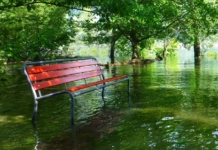When you step inside a large building like a museum, office, hospital, or movie theater, you might experience a sudden change in the temperature. It is too hot or too cold. Sudden changes in the thermal environment can make you feel uncomfortable. It can affect your overall well-being, health, productivity, and recovery.
The best part about these thermal comfort issues is that you can avoid them by taking specific measures. Most importantly, the ventilation, heating, and air conditioning systems can create excessive cooling or heating, generating a massive amount of carbon that might harm the environment. So, these inefficiencies are not only affecting one’s health but also depleting the planet. This article outlines the six primary factors that contribute to thermal comfort. Regardless of being independent, these factors together can affect thermal comfort.
- Humidity
When an area’s environment has high humidity, it only means that the air contains high water levels. It leads to less evaporation of body sweat from your skin and is supposed to be essential to cool down one’s body. However, relative humidity refers to the ratio between the level of water vapor in the air and how much it can hold at that given temperature. So, when an area’s relative humidity range is between 40-70%, it has less or almost no effect on thermal comfort.
Nevertheless, inside a non-air-conditioned space, the relative humidity tends to go above 70%. The same thing occurs when the outdoor temperature influences the thermal condition of the indoors, and this kind of temperature setting makes it difficult for your body to cool down.
- Radiant Temperature
Moreover, the thermal or radiant temperature refers to the warmth that a warm object radiates. It usually includes the radiators, sun, machinery cookers, hot surfaces, etc. Did you ever notice that the place gets more generous when you switch on the oven? Even when the home temperature is the same in each room, the thermal radiation from the cooker will increase the kitchen’s temperature.
- Clothing Insulation
Thermal comfort highly depends on your clothing’s insulating effect. Wearing a PPE or too much clothing is the leading cause of heat stress, even when the environment is not warm. When your clothing cannot provide proper insulation, you might risk health issues from various injuries, like hypothermia or frostbite, in the colder regions.
Clothing is highly responsible for causing thermal discomfort and controlling such discomforts for the wearer. It happens when your body tries to adapt to a place’s climate or temperature. So, add layers of clothing when you feel cold and remove them when you feel hot. Most companies have this setting within their workplace for the employees, enabling them to adapt their clothing reasonably, especially when wearing a uniform such as a PPE.
It is essential to understand that clothing can significantly contribute to the thermal comfort and discomfort factor. When one evaluates the protection level offered by their existing PPE with the ones provided by newer types, they can quickly improve their thermal comfort level accordingly.
- Metabolic Heat
When your body is physically active, it produces more heat. For individuals who are more into physical tasks, their body produces more heat. Hence, they need to lose such heat to prevent themselves from overheating.
The metabolic rate of an individual has an impact on their thermal comfort. You will also have to consider certain physical factors like weight, size, age, fitness level, and gender, which can significantly affect how cold or warm one feels.
- Air Velocity
Thermal comfort is significantly influenced by how swiftly air flows over an area. People may experience stuffiness in a setting with artificially heated indoor air. Feeling a stiff wind might help someone who is overheated to cool off. A fan may make you feel cooler even though the ambient temperature does not decrease because circulating air in a warm or humid workplace can accelerate heat loss through convection.
On the other hand, slight air movements may be perceived as a light wind in an office that is already cold. However, thermal comfort is influenced by air velocity, for instance:
- People may feel uncomfortable in enclosed spaces with artificially heated motionless or stagnant air.
- Moving air in warm or humid circumstances can enhance heat loss by convection without affecting air temperature.
- Air Temperature
Air temperature is usually expressed in degrees Celsius (°C). A frequent complaint of building occupants can be because of thermal discomfort. Because everyone has different preferences for thermal comfort, it might not be feasible to provide a degree of comfort suitable for all occupants. Water vapor and chemical gasses in the air will rise at higher temperatures due to the room’s high chemical and water evaporation rate.
More than 60% relative humidity (RH) can promote mold development and mildew. Moist, humid environments are ideal for growing dust mites, germs, and fungus. Residents may experience eye discomfort or congested noses at lower relative humidity (RH) levels (less than 30%). Besides this, low relative humidity (RH) may worsen some people’s allergies. It can also boost some viruses’ survival ability, promoting the spread of viral illnesses.
Final Note
So, these are a few significant factors that can significantly affect a place’s thermal comfort. To resolve a thermal comfort issue, one must try to establish the root cause of the problem. However, Analytic platforms can help to monitor the thermal comfort conditions.

| [donate]
| Help keep news FREE for our readersSupporting your local community newspaper/online news outlet is crucial now more than ever. If you believe in independent journalism,then consider making a valuable contribution by making a one-time or monthly donation. We operate in rural areas where providing unbiased news can be challenging. |



















